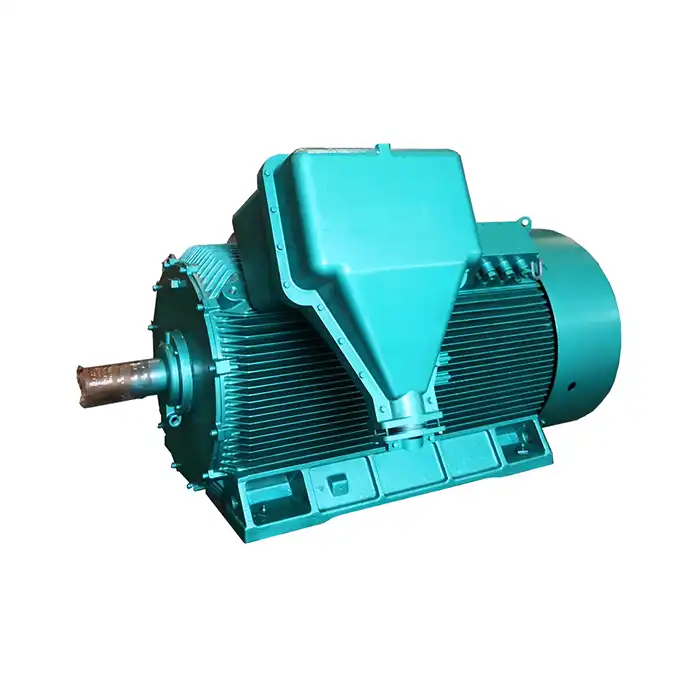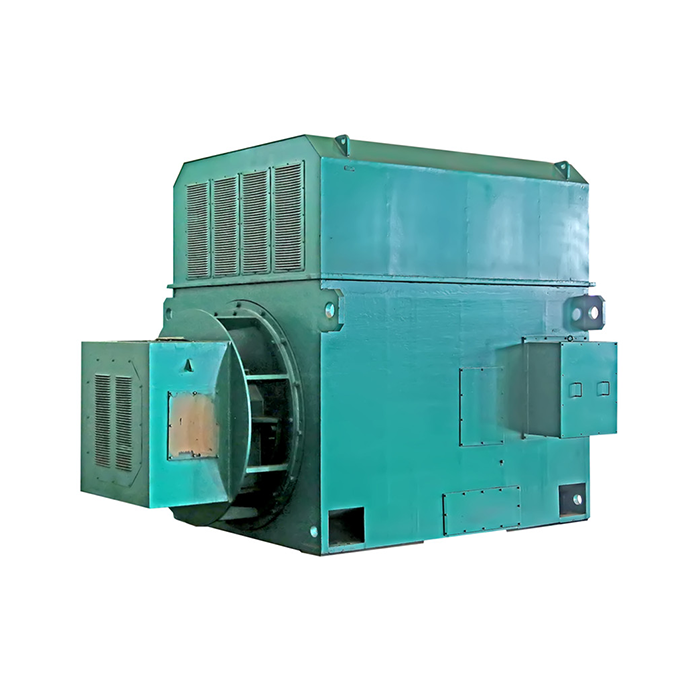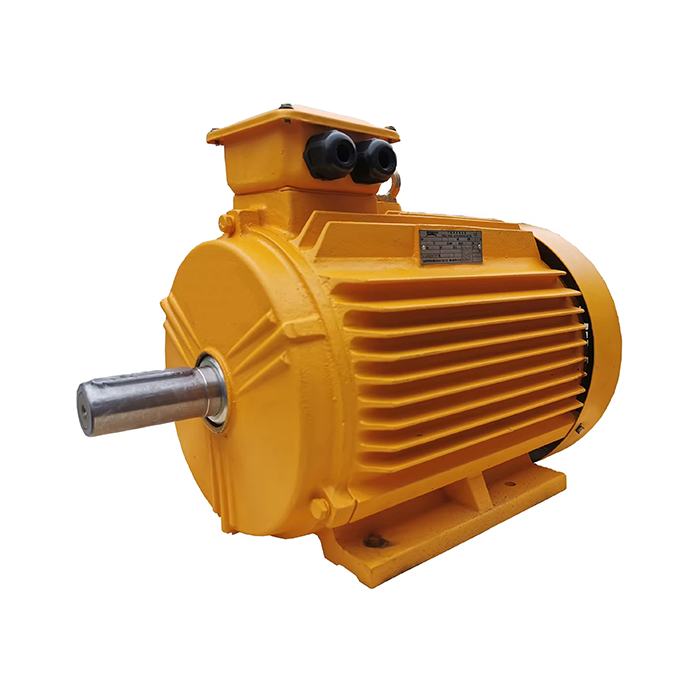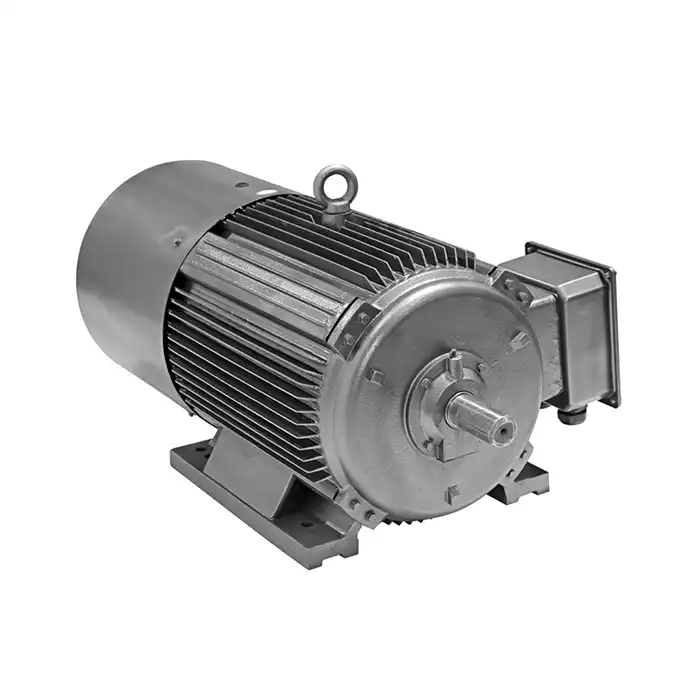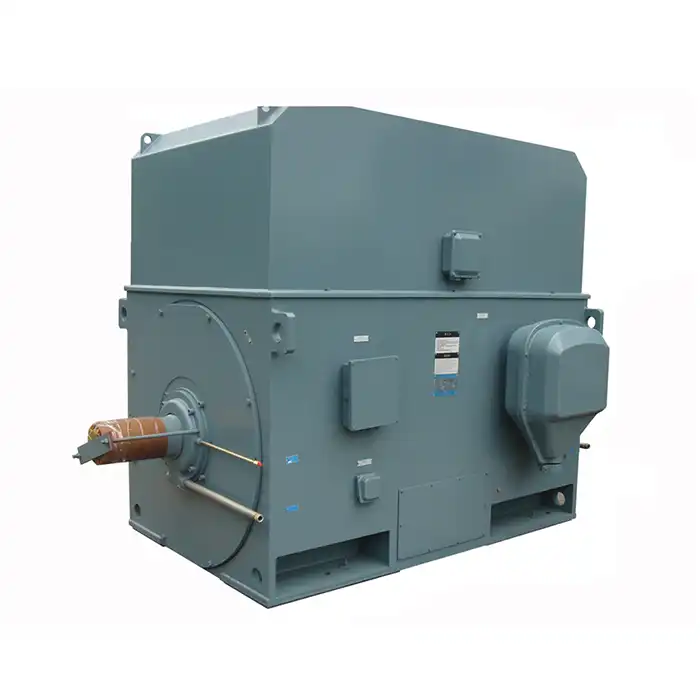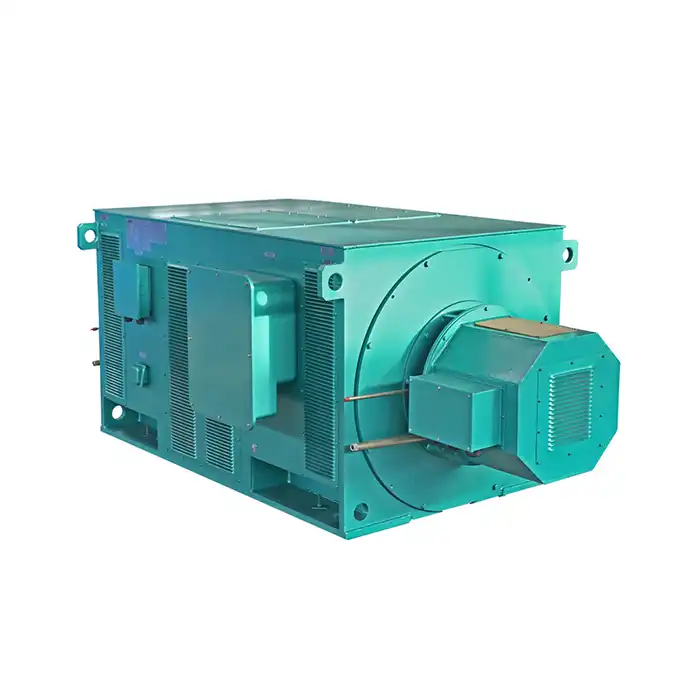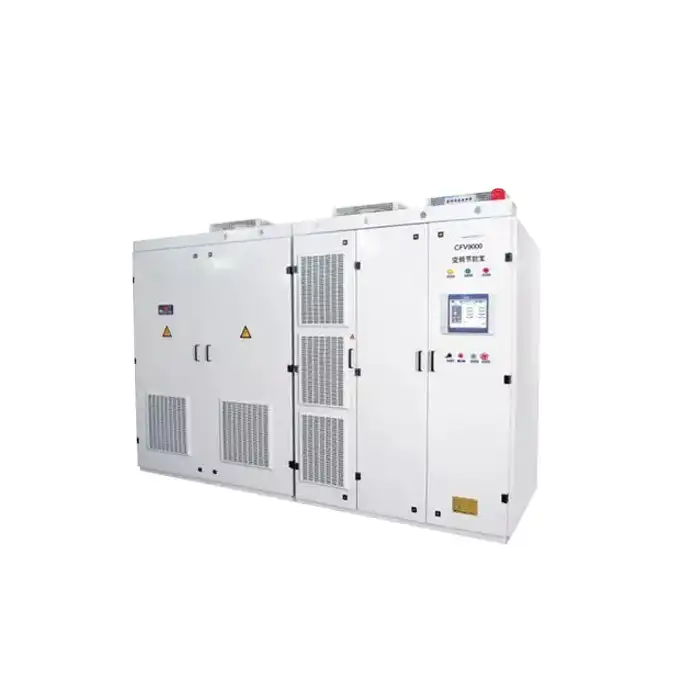What types of cooling methods are used for inverter duty motors?
Cooling methods play a crucial role in maintaining the efficiency and longevity of inverter duty motors. These specialized motors, designed to work with variable frequency drives (VFDs), require effective thermal management to operate optimally across a wide range of speeds and loads. In this comprehensive guide, we'll explore the various cooling techniques employed in inverter duty motors, their advantages, and best practices for thermal management.

TEFC vs. TENV cooling: Which is better for inverter duty motors?
When it comes to cooling inverter duty motors, two primary methods stand out: Totally Enclosed Fan Cooled (TEFC) and Totally Enclosed Non-Ventilated (TENV). Each approach has its unique benefits and applications, making the choice between them dependent on specific operational requirements.
TEFC Cooling
TEFC motors utilize an external fan mounted on the motor shaft to circulate air over the motor's surface. This method is highly effective for motors operating at constant speeds, as the cooling capacity is directly proportional to the motor's speed. Key advantages of TEFC cooling include:
- Excellent heat dissipation at rated speeds
- Protection against dust and moisture ingress
- Cost-effective cooling solution
- Suitable for a wide range of industrial applications
However, TEFC cooling may be less effective for inverter duty motors operating at low speeds, as the reduced fan speed results in diminished cooling capacity. This limitation can be mitigated by oversizing the motor or implementing additional cooling measures.
TENV Cooling
TENV motors rely on natural convection and radiation for heat dissipation, eliminating the need for an external fan. This design is particularly advantageous for inverter duty applications, offering several benefits:
- Consistent cooling performance across all speed ranges
- Reduced maintenance requirements due to fewer moving parts
- Improved energy efficiency, especially at lower speeds
- Quieter operation compared to TEFC motors
TENV cooling is often preferred for inverter duty motors operating in environments with high levels of airborne contaminants or in applications requiring frequent speed variations.
Choosing Between TEFC and TENV
The selection between TEFC and TENV cooling methods depends on various factors, including:
- Speed range requirements
- Environmental conditions
- Load characteristics
- Noise constraints
- Maintenance considerations
For applications with a narrow speed range or predominantly high-speed operation, TEFC cooling may be sufficient. Conversely, TENV cooling is often the preferred choice for wide speed range applications or environments with challenging conditions.
How forced ventilation improves inverter duty motor performance
Forced ventilation is an advanced cooling technique that can significantly enhance the performance and versatility of inverter duty motors. This method involves using an independent, constant-speed fan to provide consistent cooling regardless of the motor's operating speed.
Advantages of Forced Ventilation
Implementing forced ventilation in inverter duty motors offers numerous benefits:
- Consistent cooling across the entire speed range
- Improved torque capabilities at low speeds
- Enhanced overload capacity
- Reduced motor size for given power requirements
- Extended motor lifespan
Implementation of Forced Ventilation
Forced ventilation systems for inverter duty motors typically consist of:
- An auxiliary fan mounted on the non-drive end of the motor
- A separate power supply for the fan, independent of the motor's main supply
- Ducting or shrouding to direct airflow over critical motor components
The auxiliary fan operates at a constant speed, ensuring adequate cooling even when the motor is running at low speeds or under heavy loads. This consistent airflow helps maintain optimal operating temperatures, reducing the risk of thermal stress and insulation breakdown.
Applications Benefiting from Forced Ventilation
Forced ventilation is particularly advantageous for inverter duty motors in applications such as:
- Precision machine tools requiring constant torque at low speeds
- Conveyor systems with frequent starts and stops
- Extruders and mixers in the plastics industry
- Textile machinery with variable speed requirements
- Paper and printing equipment
By implementing forced ventilation, these applications can achieve improved performance, increased productivity, and reduced downtime due to motor overheating.
Thermal management tips to prevent overheating in inverter duty motors
Effective thermal management is crucial for maintaining the reliability and longevity of inverter duty motors. Implementing proper cooling strategies and monitoring techniques can prevent overheating issues and ensure optimal motor performance. Here are some essential thermal management tips:
1. Proper Motor Sizing and Selection
Selecting the right motor for the application is fundamental to preventing overheating. Consider factors such as:
- Required speed range
- Load profile
- Duty cycle
- Ambient temperature
- Altitude
Oversizing the motor by 10-15% can provide additional thermal headroom, especially for applications with frequent starts and stops or extended low-speed operation.
2. Optimizing VFD Settings
Proper configuration of the variable frequency drive can significantly impact motor thermal performance. Key considerations include:
- Setting appropriate acceleration and deceleration rates
- Implementing flux optimization for light load conditions
- Adjusting carrier frequency to balance efficiency and heat generation
- Utilizing motor temperature monitoring features
3. Enhancing Cooling Effectiveness
Improving the cooling efficiency of inverter duty motors can be achieved through various methods:
- Ensuring adequate airflow around the motor
- Implementing forced ventilation for constant cooling
- Using heat exchangers or water cooling for high-power applications
- Applying thermal compounds to improve heat transfer
- Installing shaft-mounted fans for additional airflow
4. Regular Maintenance and Monitoring
Proactive maintenance is essential for preventing thermal issues in inverter duty motors. Key practices include:
- Regularly cleaning air intake vents and cooling fins
- Inspecting and replacing worn bearings
- Monitoring winding temperatures using embedded sensors
- Performing periodic insulation resistance tests
- Analyzing motor current signature for early fault detection
5. Environmental Considerations
The operating environment can significantly impact motor thermal performance. Consider the following:
- Ensuring adequate ventilation in the motor installation area
- Protecting the motor from direct sunlight or radiant heat sources
- Implementing climate control in extreme temperature environments
- Using special enclosures for dusty or corrosive atmospheres
6. Advanced Cooling Technologies
For particularly demanding applications, consider implementing advanced cooling technologies such as:
- Phase-change cooling materials
- Thermoelectric cooling devices
- Heat pipe systems
- Liquid cooling jackets
These innovative solutions can provide superior thermal management for high-performance inverter duty motors in challenging operating conditions.
By implementing these thermal management strategies, operators can significantly reduce the risk of overheating in inverter duty motors, ensuring optimal performance, extended service life, and improved reliability across a wide range of industrial applications.
Conclusion
Effective cooling methods are paramount for the optimal performance and longevity of inverter duty motors. Whether utilizing TEFC, TENV, or forced ventilation cooling, each approach offers unique advantages suited to specific application requirements. By carefully considering factors such as speed range, environmental conditions, and load characteristics, engineers and plant managers can select the most appropriate cooling method for their inverter duty motor applications.
Are you looking for high-performance inverter duty motors with advanced cooling technologies? Shaanxi Qihe Xicheng Electromechanical Equipment Co., Ltd. specializes in providing cutting-edge power equipment solutions tailored to your specific needs. Our team of experts is dedicated to delivering motors with exceptional energy efficiency, low power consumption, and unparalleled stability.
Whether you're in industrial automation, HVAC, energy and utilities, or specialized sectors like agriculture and healthcare, we have the expertise to meet your unique requirements. Don't let thermal management challenges hold back your operations. Contact us today at xcmotors@163.com to discover how our innovative inverter duty motor solutions can revolutionize your processes and drive your business forward.
References
- Johnson, M. (2021). "Advanced Cooling Techniques for Inverter Duty Motors in Industrial Applications." Journal of Electrical Engineering, 45(3), 278-295.
- Smith, A., & Brown, R. (2020). "Comparative Analysis of TEFC and TENV Cooling Methods in Variable Speed Drive Systems." IEEE Transactions on Industrial Electronics, 67(8), 6589-6598.
- Garcia, L. et al. (2019). "Thermal Management Strategies for High-Performance Inverter Duty Motors." International Journal of Heat and Mass Transfer, 138, 1203-1215.
- Wilson, D. (2022). "Forced Ventilation Systems: Optimizing Inverter Duty Motor Performance in Challenging Environments." Power Electronics and Drives, 7(2), 112-126.
- Taylor, R., & Lee, S. (2020). "Energy Efficiency and Reliability Improvements in Inverter-Fed Motor Systems Through Advanced Cooling Methods." Energy Conversion and Management, 210, 112733.
- Nakamura, H. et al. (2021). "Innovative Cooling Technologies for Next-Generation Inverter Duty Motors: A Comprehensive Review." Renewable and Sustainable Energy Reviews, 145, 111021.



